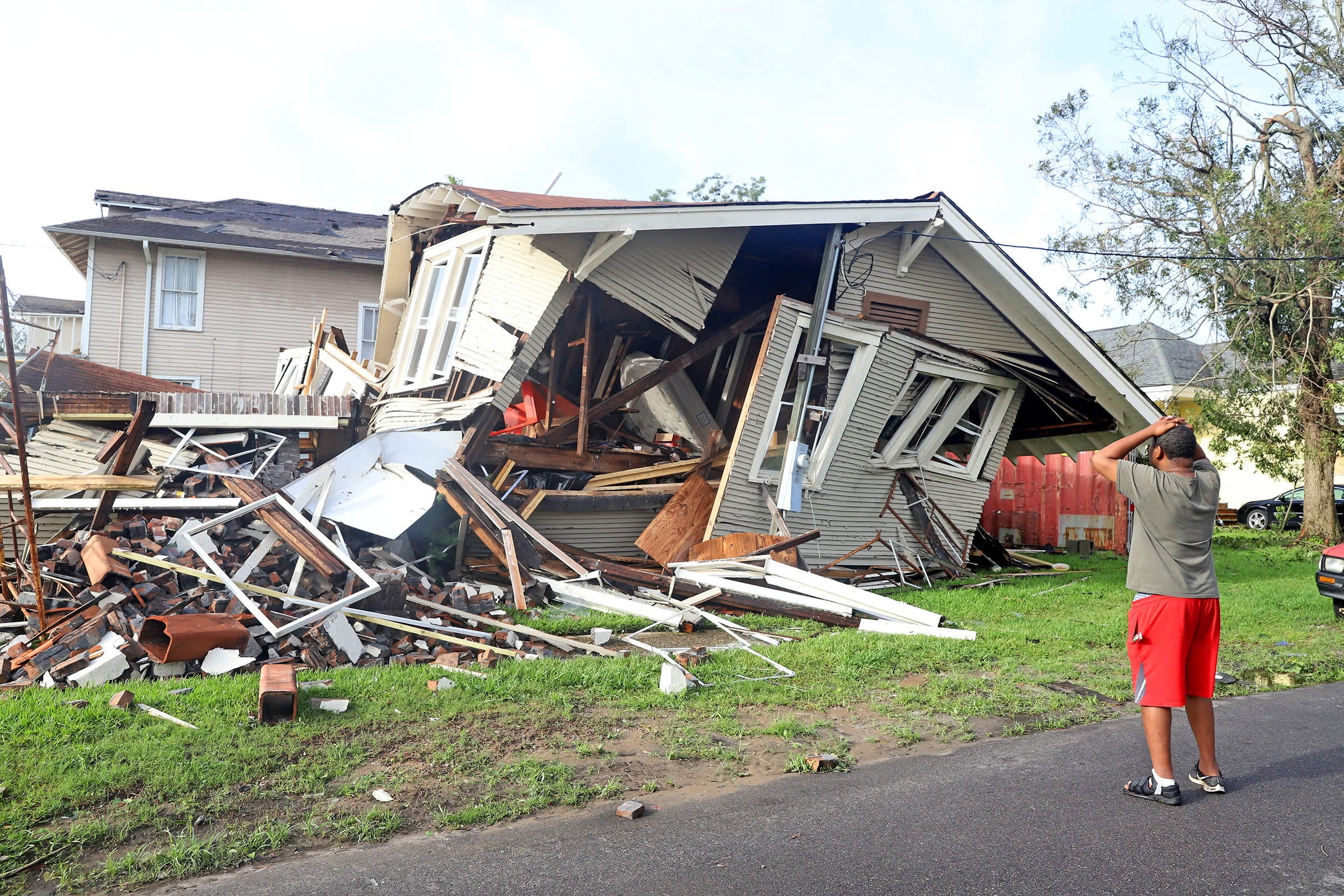If you’ve winced at the destruction caused by Hurricane Ida along the Gulf Coast, you may want to consider whether you’re prepared in case the next big storm hits your neighborhood.
One part of that evaluation should be a review of the insurance coverage for your house.
While homeowners policies cover some forms of damage caused by weather events, they don’t cover everything. And, there may be different deductibles that apply depending on the particular cause of the damage.
“Double check with your insurance agent,” said Spencer Houldin, co-president of Ericson Insurance Advisors. “And don’t do it two days before the storm hits because at that point, any requested changes probably won’t be accepted.”
Ida, which slammed into Louisiana on Sunday as a category 4 storm with maximum sustained winds of 150 mph, follows two other destructive storms in recent weeks — Fred in the Southeast and Henri in the Northeast. As temperatures rise and more moisture is held in the air, massive storms — some of which stall and dump torrential rainfall — have become more frequent in recent years.
The Atlantic hurricane season started June 1 and runs through Nov. 30. The peak, however, is September. Last year, there were 30 storms that were named — a record — 12 of which made landfall in the U.S.
Here’s what to consider as you review your coverage.
Your flood risk
Homeowners policies generally exclude flooding from coverage. Yet just 1 inch of water in your home can cause up to $25,000 worth of damage, according to the Federal Emergency Management Agency.
Moreover, 1 in 4 flood insurance claims come from outside a high-risk zone.
“While you might not live by a lake or river, it doesn’t mean you can’t have groundwater damage to your home,” Houldin said.
While you might not live by a lake or river, it doesn’t mean you can’t have groundwater damage to your home.Spencer HouldinCo-president of Ericson Insurance Advisors
For coverage, you’d need separate flood insurance through either the federal National Flood Insurance Program or a private insurer. Be aware, however, that there are coverage exclusions and limitations. And, flood policies generally take 30 days to become effective.
The average yearly cost through the government’s program is $734, although that can vary greatly depending on location.
“I think with the way these weather patterns have become, people should think more about a flood insurance policy,” Houldin said.
Different damage, different deductibles
While many types of disasters are covered under the standard part of your policy, some weather-related events fall under a different part that comes with a separate deductible.
If you live in a state along the East Coast or Gulf of Mexico, there’s a good chance your homeowners insurance policy has a hurricane deductible. Likewise, in states more prone to wind-related events — i.e., tornadoes — a wind deductible is more likely.
Either way, those amounts typically range from about 1% to 5% (with a minimum $500) depending on the specifics of your insurance contract. Some are as high as 15%, Houldin said.
More from Personal Finance:
Tips to help unemployed parents refresh their job skills
Renters are still protected from eviction in these states
Pandemic pushes search for remote jobs up 460%
It’s important to note that for those percentage-based deductibles, the amount is based on your insured value, not the damage caused.
For example, if your home is insured for $500,000 and you have a 5% hurricane deductible, you’d be responsible for covering the first $25,000 worth of damage. This means it’s wise to have a plan to cover your share in the aftermath of a disaster.
Replacement cost
Standard policies typically will repair or replace your home up to the amount it’s insured for. Alternatively, you may have a clause that increases that replacement amount to 125% or 150% of your dwelling coverage or the policy may have no cap on the replacement cost.
When you’re evaluating the replacement-cost provision of your policy, be sure to take into consideration the higher costs of rebuilding your home — especially if it’s been a while since you purchased the insurance.
Protect your important records
Long before disaster hits, key documents — such as birth certificates, deeds, titles and tax returns — should be stored safely in a waterproof spot, and duplicates should be kept elsewhere with a trusted person, advises the IRS. Or, you can scan and store them online or on a flash drive.
Additionally, it’s worth taking photos of your home’s contents and condition to help facilitate the insurance claims process if your house ends up being damaged. The idea is to have proof of what you own, along with a record of what kind of shape everything was in before the storm.
Renters
Even if you don’t own your home, your finances are still at risk if a storm damages the house or building you live in. While the owner’s insurance would cover the structure itself, you’d be responsible for your own property.
Renter’s insurance is an option for covering your belongings. It also can cover the cost of living somewhere else if you can’t remain in your home after a storm or any other insured event.
The national average for a policy with $30,000 of coverage for personal property, a $500 deductible and $100,000 of liability protection is $168 a year (about $14 a month), according to NerdWallet.
